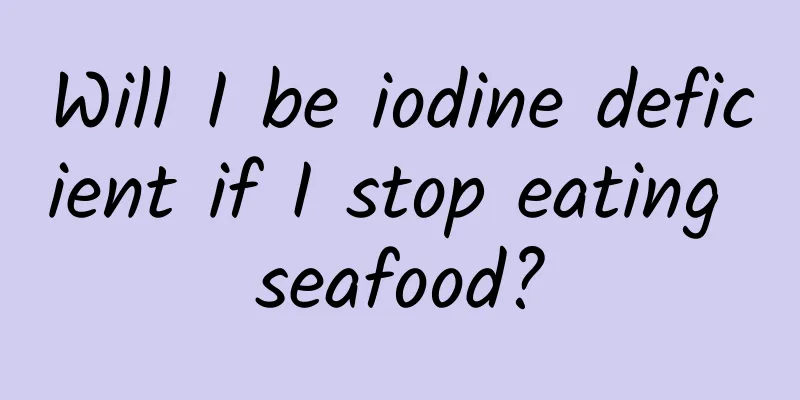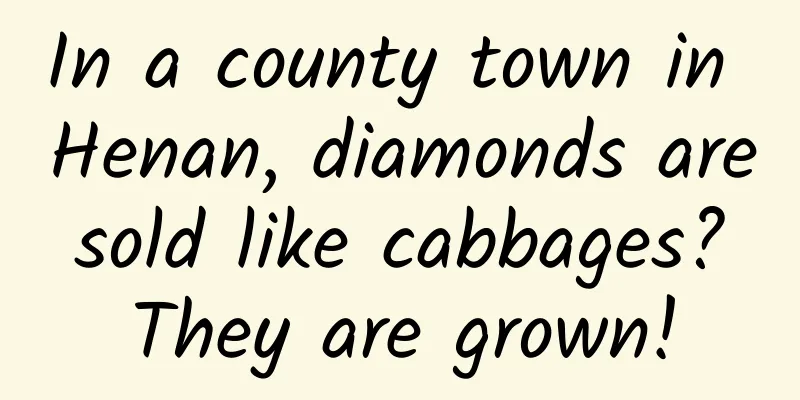Will I be iodine deficient if I stop eating seafood?

|
In the age of universal iodine supplementation, people who grow up near the sea often worry that they have eaten too much iodine. Everyone knows that seafood is rich in iodine. Do people near the sea still need to eat iodized salt? Recently, salmon from Xinfadi was contaminated with the new coronavirus. Many people no longer eat seafood. Will they be deficient in iodine? The iodine content in food varies greatly. Generally speaking, seafood contains more iodine than terrestrial products, and animal products contain more iodine than plant products. As we all know, seaweeds such as kelp and laver have the highest iodine content, which is usually dozens or even hundreds of times higher than other foods. Marine fish, shrimp, and seashells are foods with relatively high iodine content. Meat, eggs, and milk can also provide some iodine, while fruits, vegetables, and grains have relatively low iodine content. How much do these foods contribute to the body's iodine intake? Overall, kelp, seaweed and marine fish only provide about 2% of the iodine intake of Chinese people. Even if all foods are added together, the iodine provided is quite limited. Statistics show that 80% of the iodine consumed by Chinese people comes from iodized salt, and iodized salt is more important in inland provinces with fewer aquatic products. In some places, residents almost exclusively consume iodine from iodized salt, such as Ningxia. Even in high-iodine areas where non-iodized salt is supplied, about 90% of the iodine consumed by people comes from local drinking water, and seafood is not the main source. This is the general situation, but what about the situation at the seaside? Many people think that since coastal residents eat seafood every day, iodized salt is not important. In fact, this is a misunderstanding. On the one hand, except for kelp and seaweed, the iodine content of other seafood is not that high. On the other hand, people living by the sea do not eat seafood every day. For example, iodized salt accounts for about 60% of the iodine intake of residents in Zhejiang Province, while in Liaoning Province it accounts for more than 90%. About 30% of the iodine intake of residents in coastal cities in Zhejiang comes from seaweed and kelp, which is already a high proportion, but iodized salt is still the main source. Are coastal cities really lacking in iodine? Data from Zhejiang Province in 2011 showed that 50% of adults in Zhoushan, Ningbo and Taizhou (coastal areas) had iodine intake below the daily requirement (120 micrograms), while this proportion was only 8% in Jinhua, Quzhou and Lishui (inland areas). This phenomenon may seem abnormal, but it is actually very common. There has always been a stereotype that mountainous areas, rural areas and inland areas are prone to iodine deficiency. As a result, these areas pay special attention to iodine supplementation, and the coverage and qualification rates of iodized salt are high, while plains, cities and coastal areas have become iodine nutrition depressions. Pregnant women and nursing mothers are the most common groups of people who are deficient in iodine. This is because they are in a special physiological state and their iodine needs are greater than those of the general population. Iodine deficiency in pregnant women and nursing mothers will affect the brain development of their children, which means that the children will be a little dumber. According to the World Health Organization's criteria, the proportion of pregnant women with iodine deficiency in Liaoning, Fujian, Zhejiang and Shanghai is not low. Among them, the proportion of pregnant women with iodine deficiency in Shanghai exceeds 50%, which is higher than many inland cities. The iodine deficiency problem of pregnant women and nursing mothers is difficult to solve with iodized salt. Some countries recommend additional iodine supplementation through dietary supplements. The "Dietary Guidelines for Chinese Residents" emphasizes the importance of health examinations, understanding iodine nutritional levels through urine iodine indicators, and reasonable iodine supplementation. In addition to eating iodized salt, it is recommended for pregnant women to eat iodine-rich seafood (kelp, seaweed, mussels) once a week, pregnant women are recommended to eat 1-2 times a week, and nursing mothers are advised to eat more seafood. So the conclusion is that it is necessary to eat iodized salt, whether in coastal areas or inland areas, as long as it is not a high-iodine area. However, it should be emphasized that the source of iodine intake is related to the dietary structure. Although most people rarely eat kelp and laver, a few people who particularly like to eat laver and kelp should still pay attention to the risk of excessive iodine. Trivia The distribution of iodine in a whole kelp is uneven. Do you think the content is higher near the top or the root? I guess many people think that the roots are older and should have accumulated more iodine. In fact, it is the opposite. The iodine content is higher near the top and the edge. |
<<: Will you develop color blindness later in life? You must know these misunderstandings
>>: Do you have a computer? Turn it on and join the research on the new coronavirus!
Recommend
How to plan a complete and efficient event? (Four)
This article mainly discusses how to do a complet...
He was determined to serve the country with science, climb the peak of physics, and open the door for Peking University to become a world-class university.
On the road of scientific exploration, countless ...
The Fantastic Journey of Sinus Cancer: A Battle with the "Microcosmos"
Have you ever wondered what secrets are hidden in...
Spending $1.7 billion and traveling hundreds of millions of kilometers just to listen to the sound of the ocean there.
Jupiter is the largest planet in the solar system...
What a "penalty"! The anchor was suspected of picking a national second protected plant, and the police intervened
"The Qinghai-Tibet snow lotus is picked in i...
How do Apple devices greet each other? - An interesting talk about the Bonjour protocol
Students who use Apple's full range of servic...
How does traffic turn into sales? You must solve these 5 problems!
Suppose there is a chopping board that costs 1,50...
An irresponsible guide for non-professionals to learn programming
[[152481]] Why write such an article? Students wh...
What on earth does this little bastard grapefruit have to do with pomelo?
The citrus family has a long-standing reputation ...
APP promotion: strategies for App Store recommendation
At 1 a.m. on September 10, Apple held a press con...
Asteroid "2024 YR4": Will the Earth receive an unexpected "kiss" in 2032?
Author: Huang Xianghong Duan Yuechu In the vast a...
How to write Halloween copy? This set of Halloween copywriting is really weird
I wrote a set of copywriting that took advantage ...
International Day for Biological Diversity丨One million species are facing the threat of extinction, and this reason cannot be ignored
Climate change has always been a global concern, ...
5 ways to use eye tracking to improve website operations
If your website’s user experience is poor, you ar...
While you are eating it, it is also eating you... After reading this, do you still dare to eat it directly?
Expert of this article: Fu Shufang, Master of Foo...









